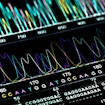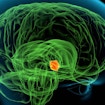
Over the past few years, the number of genes associated with autism spectrum disorder (ASD) has increased substantially. More than 65 genes are strongly associated with autism, and current estimates suggest that hundreds of genes may play a role.

Over the past few years, the number of genes associated with autism spectrum disorder (ASD) has increased substantially. More than 65 genes are strongly associated with autism, and current estimates suggest that hundreds of genes may play a role.

SPARK (Simons Foundation Powering Autism Research for Knowledge) is an autism research initiative that aims to recruit, engage and retain a community of 50,000 individuals with autism and their family members living in the U.S. Participation in this cohort will involve contribution of medical and behavioral information, mailing in saliva for genetic analysis, the potential option to have genetic findings related to autism returned, and consenting to be invited to participate in future research studies.

Autism spectrum disorders (ASDs) are highly heritable but have a complex genetic architecture. There is significant locus heterogeneity for ASD and distinct subgroups, including syndromic and nonsyndromic cases. Whole-exome sequencing (WES) has emerged as an important tool in understanding ASD. WES studies have revealed an increased burden of de novo variants in people with ASD compared with unaffected individuals. However, due to variants in thousands of different genes — many of which are poorly characterized — interpreting the disease relevance of individual variants has been difficult.

Recent advances in genome-wide approaches for gene discovery in autism spectrum disorders (ASDs) have identified a large list of strongly associated ASD risk genes, as well as an even larger list of potential ASD risk genes. In total, these comprise approximately 250 genes. In order to further distinguish the true ASD risk genes from false-positive associations, additional sequencing data is required. Molecular inversion probe (MIP) sequencing is an efficient approach because of the low cost, potential for parallelization and high-throughput capacity.

Gene discovery in autism spectrum disorders (ASDs) has accelerated in the past several years. However, current efforts have mainly focused on the coding portion of the genome, which reflects approximately 1 percent of the total genome. This focus is partly due to the expense of characterizing the entire genome, as well as difficulties in interpreting the significance of variations in noncoding DNA information.

Autism, intellectual disability, developmental delay and related phenotypes affect more than 1 percent of children worldwide. These conditions can reduce the length and quality of life of affected individuals, and contribute to emotional distress, financial challenges and lifestyle restrictions for affected families. Because these conditions are diverse and sometimes severe, many affected children undergo years of interactions with clinicians and costly testing procedures without ever receiving a precise medical diagnosis.


Autism spectrum disorder (ASD) affects at least 1 child in 68, and imposes a huge psychological and economic burden on affected individuals, their families and society. While significant progress has been made in determining genetic risk factors for ASD, there remains a substantial amount of unidentified genetic change contributing to risk.

Exome sequencing and copy number variant (CNV) analyses have contributed significantly to our understanding of the genetic etiology of autism spectrum disorder (ASD). In particular, de novo and private likely-gene-disruptive (LGD) mutations are major risk factors, contributing to 30 percent and 7 percent of simplex autism, respectively. Despite these successes, roughly 60 percent of the genetic etiology of ASD remains unexplained.

Despite the existence of a core set of features and affected biological networks, autism spectrum disorders (ASDs) are genetically heterogeneous. While variants in hundreds of genes have been implicated as causal or risk-conferring for ASD, a large percentage of the heritability of ASDs remains unaccounted for. This suggests that a number of inherited causal or risk mutations linked to autism have gone undiagnosed.